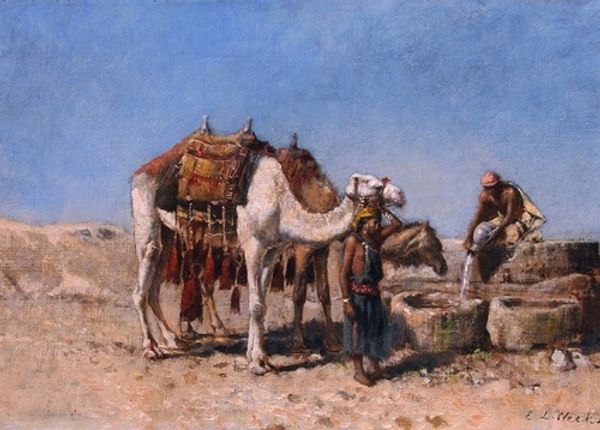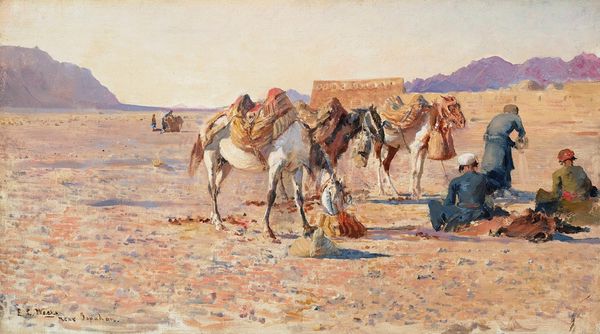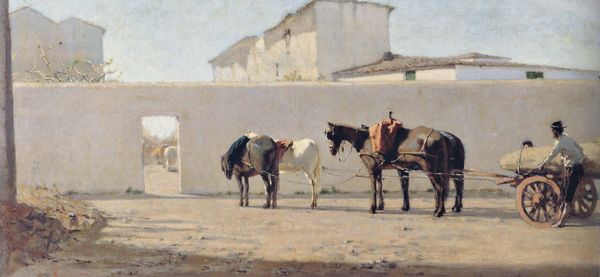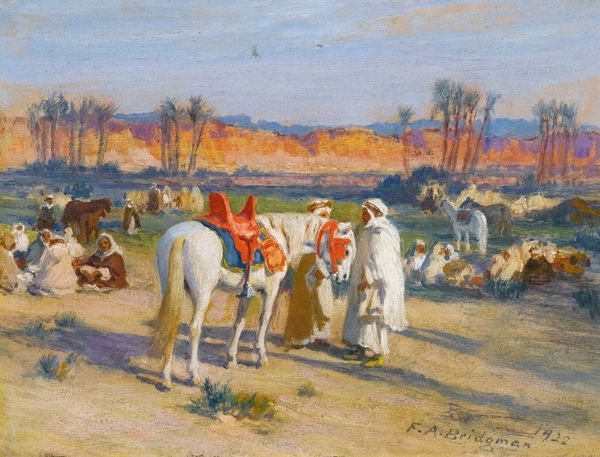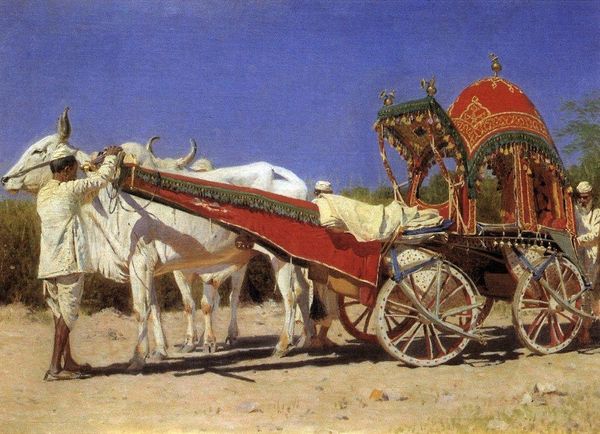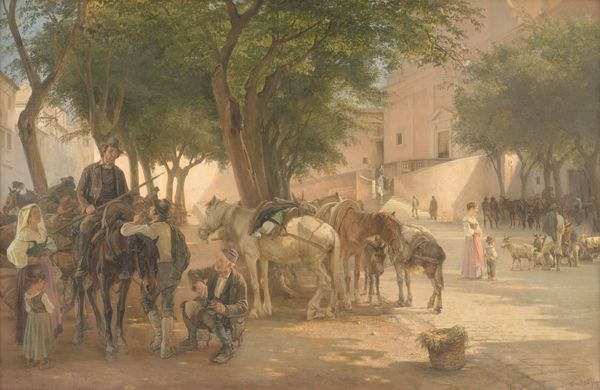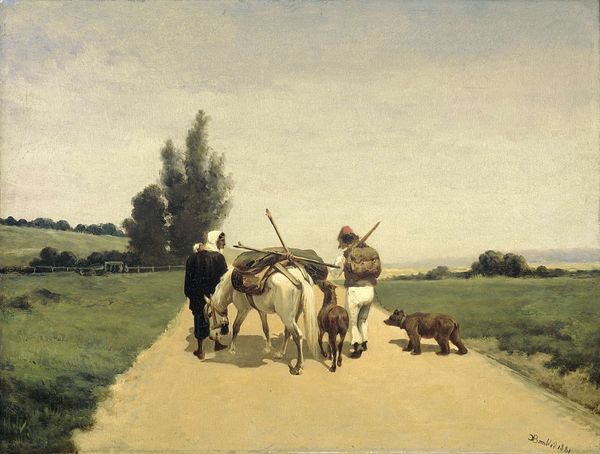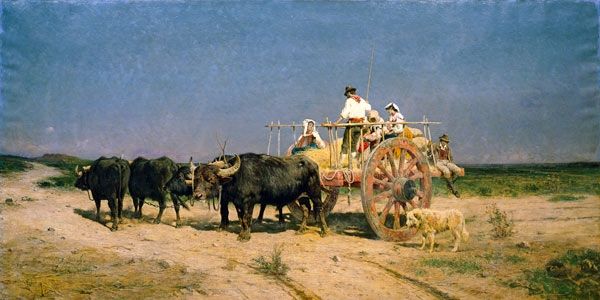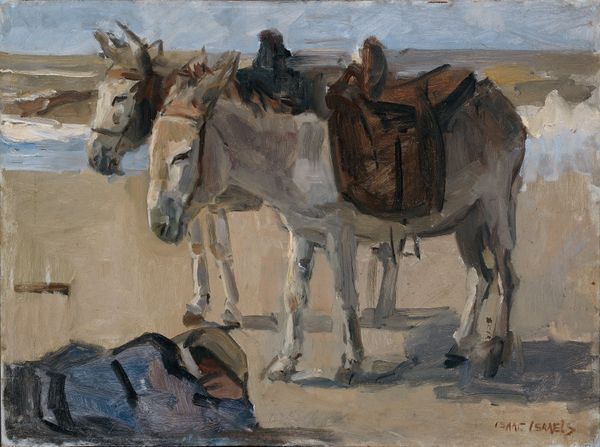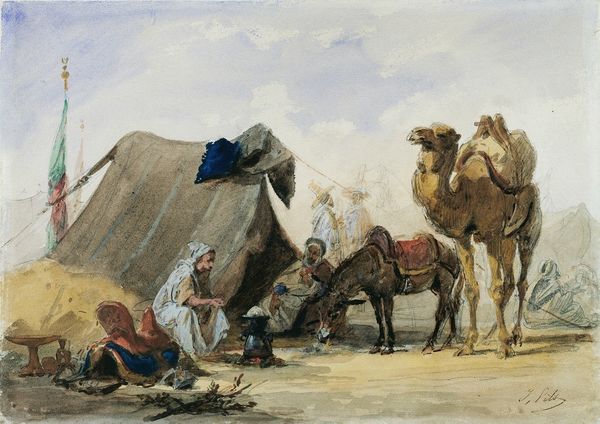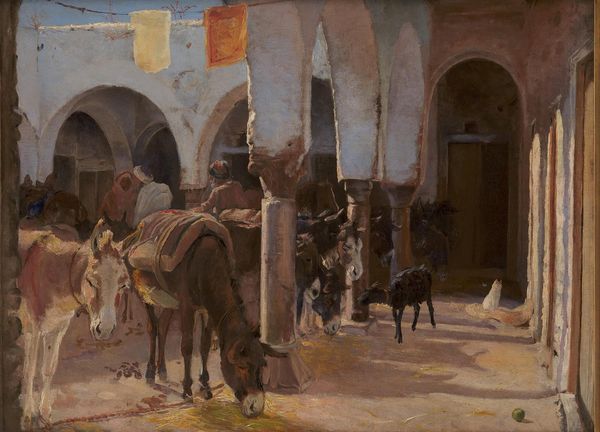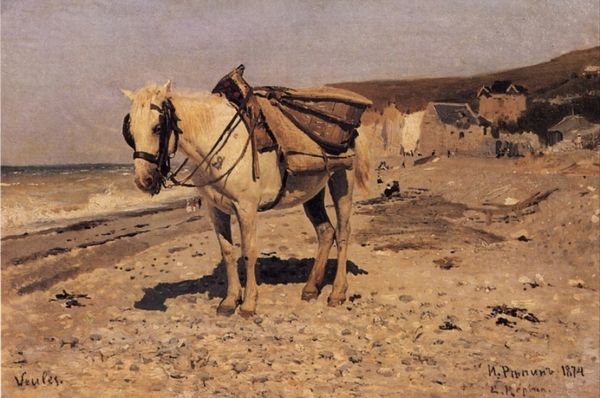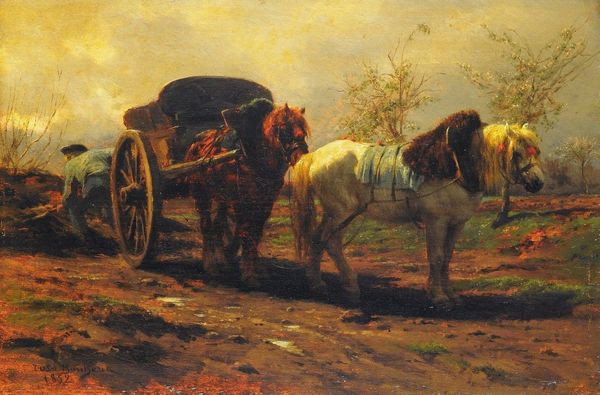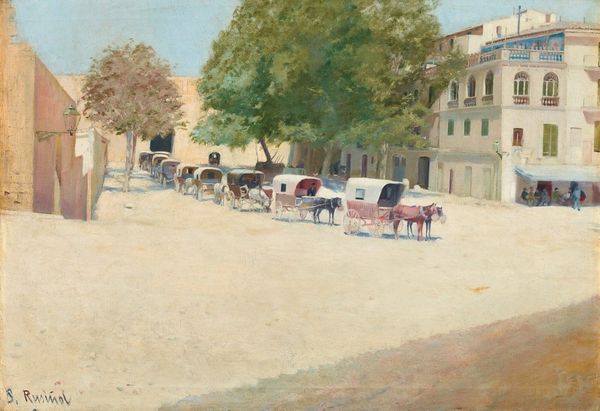
Copyright: Public Domain: Artvee
Editor: So here we have Vereshchagin's "Carriage to Delhi," painted in 1875. It's an oil painting depicting a bullock cart making its way through a dusty landscape. I'm really struck by how ordinary the scene feels, almost like a snapshot in time. What strikes you most about this piece? Curator: What interests me is thinking about how this “ordinary” scene was presented to, and understood by, European audiences at the time. Vereshchagin was part of a wave of Orientalist painters who depicted the East. Do you notice any elements of exoticism or romanticism that might appeal to Western viewers’ fantasies about India? Editor: Well, there's a dome-shaped structure visible in the background that could hint at exoticism. Also, the details of the carriage and the driver's attire seem very specific to the location. Is it problematic for the artist to profit from such themes, or is it educational for the Western public? Curator: That's a tricky question and central to considering this kind of image. While there's an argument to be made for introducing different cultures, the power dynamics at play during this period can't be ignored. The artwork becomes a symbol of colonial power and Western cultural dominance. Think about who controlled the narrative, whose perspective was being centered, and who benefited most from this depiction. Editor: That's a perspective I hadn't fully considered. It makes me view the painting in a totally new way, not just as a scene but as a statement of power, filtered through a very specific, colonial lens. Curator: Precisely! The image reinforces the perception of the "other," contributing to existing stereotypes. How can we view this image critically, acknowledging the historical context, and challenge the stereotypes of the culture the artwork portrays? Editor: That's definitely given me a lot to consider about how art can both reflect and shape perceptions. I think the painting holds far more complexity now that it did a few minutes ago. Thanks for shedding light on how politics impacts the art. Curator: Absolutely, art never exists in a vacuum; it is influenced by culture, and influences society, often revealing complicated histories of power.
Comments
No comments
Be the first to comment and join the conversation on the ultimate creative platform.
